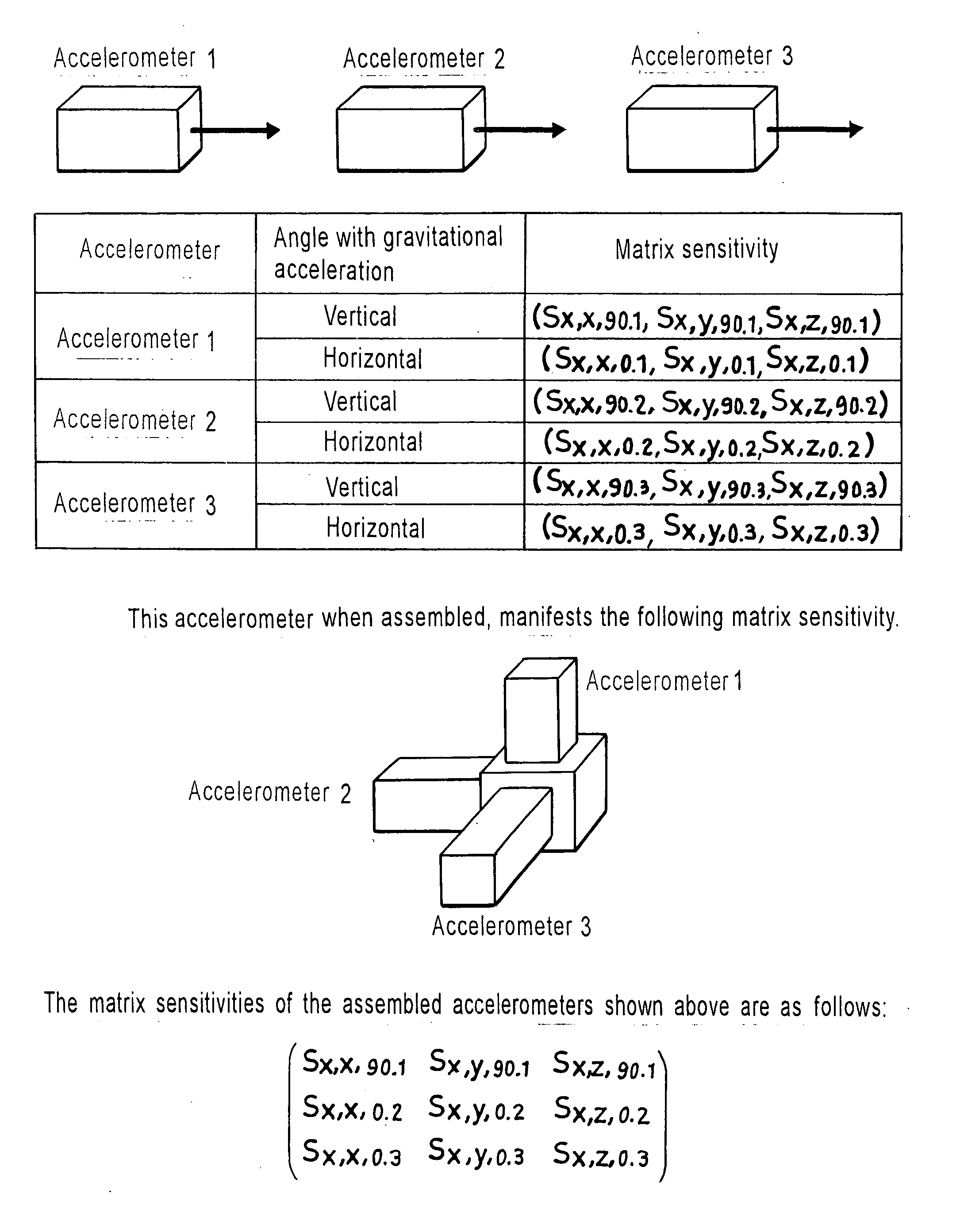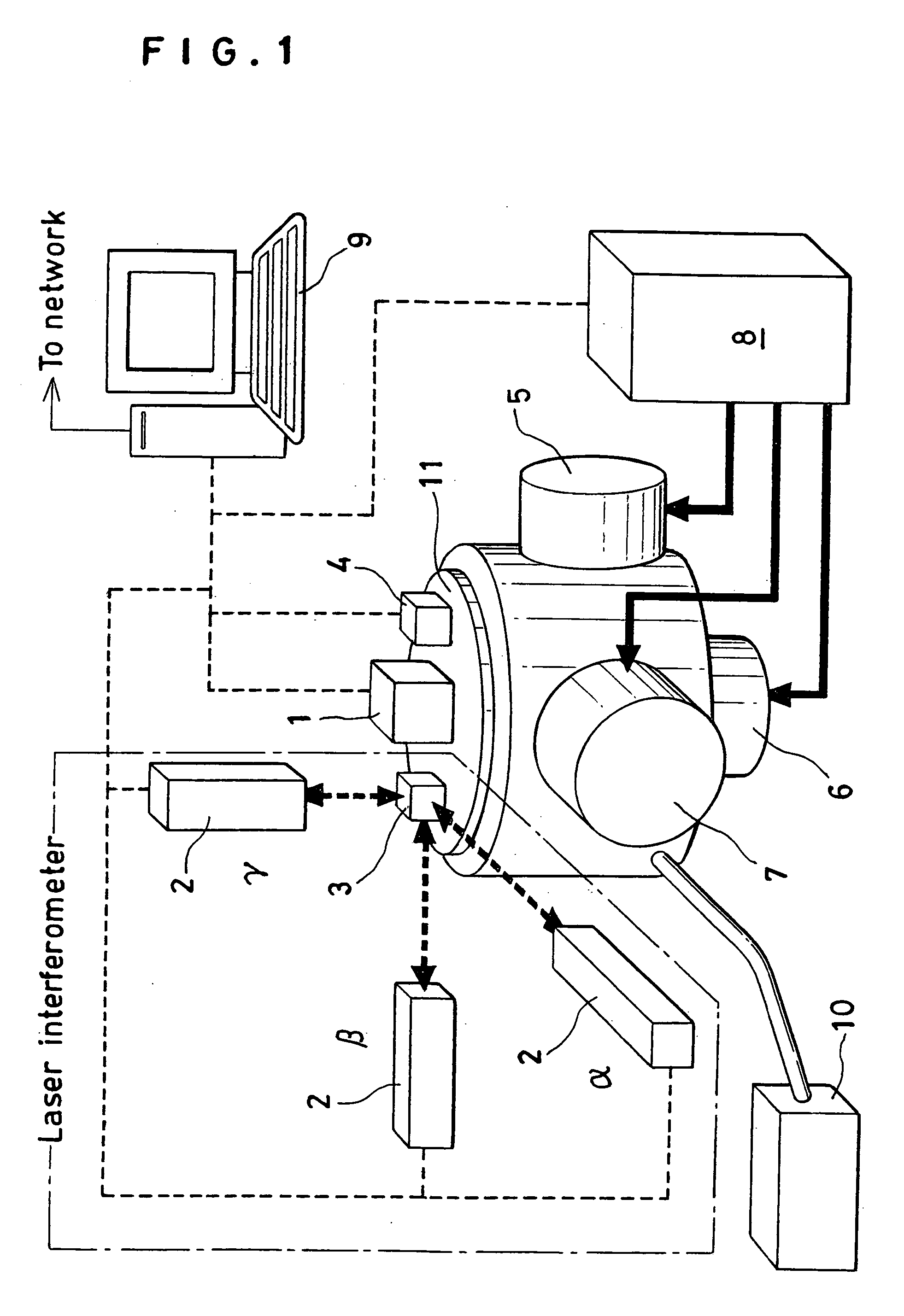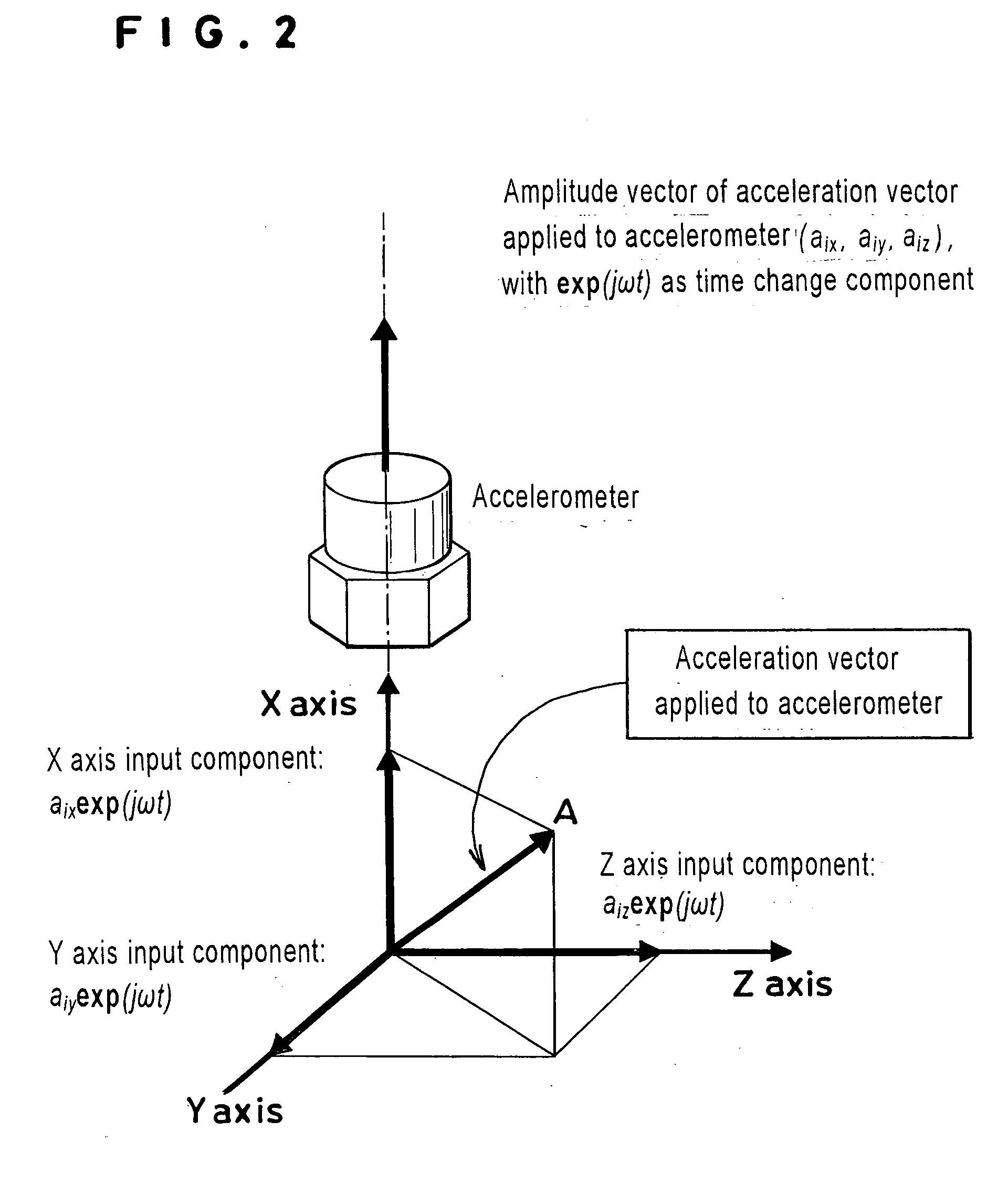Dynamic matrix sensitivity measuring instrument for inertial sensors, and measuring method therefor
a technology of inertia sensor and dynamic matrix, which is applied in the direction of instruments, pedestrian/occupant safety arrangements, vehicular safety arrangements, etc., can solve the problems of calibration techniques, device limitations to one-dimensional motion, and the state of affairs has not fully satisfactorily established a method for evaluating the performance of acceleration sensors or perfected a measurement standard
- Summary
- Abstract
- Description
- Claims
- Application Information
AI Technical Summary
Benefits of technology
Problems solved by technology
Method used
Image
Examples
example 1
[0090] First, as Example 1, the case of adopting a one-axis accelerometer as the accelerometer 1 subject to calibration and using a three-dimensional motion generating machine will be explained.
[0091] The operating part of the processor 9 is manipulated to transmit control signals to the individual actuators 5, 6 and 7 which are sources of vibration so that the tables of these motion generating machines may generate respectively prescribed motions. At this time, the inertia sensor 4 for controlling the motion generating machine makes measurement through the table 11 to judge whether or not the individual actuators 5, 6 and 7 are operating with prescribed vibrations and the processor 9 generates a control signal based on the difference between the waveform of the target motion of the table and the actually measured waveform and transmits control signals to the individual actuators 5, 6 and 7 so that the actuators 5, 6 and 7 may produce prescribed vibrations.
[0092] Thus, the prescri...
example 2
[0102] Example 2 represents the case of adopting a two-axis accelerometer as the accelerometer 1 subject to calibration and using a three-dimensional motion generating machine. The output signals of the accelerometer 1 are input to the processor 9 by using the two sensitivity axes of the accelerometer 1 as X axis and Y axis. The processor 9 subjects the output signals to Laplace transform and consequently obtains (aox(jω), aoy(jω), 0). The letter ω denotes the angular frequencies. The Z axis component is zero of course. Similarly, the laser interferometer 2 measures the input acceleration of the accelerometer 1 and the processor 9 subjects the input acceleration to Laplace transform and consequently obtains (aix(jω), aiy(jω), aiz(jω)). It is not stipulated that the input acceleration falls on a plane (sensitivity plane) determined by the two sensitivity axes of the accelerometer 1. When this stipulation is accepted, it does not result in supporting a conclusion that the input accele...
example 3
[0113] Example 3 represents the case of adopting a three-axis accelerometer as the accelerometer 1 (inertia sensor) subject to calibration and using a three-dimensional motion generating machine. The output signals of the accelerometer 1 are input to the processor 9 by using the three sensitivity axes of the accelerometer 1 as the inertia sensor, i.e. X axis, Y axis and Z axis. The processor 9 subjects the output signals to Laplace transform and consequently obtains (aox(jω), aoy(jω), aoz(jω)). The letter to denotes the angular frequencies.
[0114] Similarly, the laser interferometer 2 measures the input acceleration of the accelerometer 1 and the processor 9 subjects the input acceleration to Laplace transform and consequently obtains (aix(jω), aiy(jω), aiz(jω)). It is not stipulated generally that the input acceleration falls on a vector space (sensitivity space) determined by the three sensitivity axes of the accelerometer. When this stipulation is accepted, it does not result in ...
PUM
 Login to View More
Login to View More Abstract
Description
Claims
Application Information
 Login to View More
Login to View More - R&D
- Intellectual Property
- Life Sciences
- Materials
- Tech Scout
- Unparalleled Data Quality
- Higher Quality Content
- 60% Fewer Hallucinations
Browse by: Latest US Patents, China's latest patents, Technical Efficacy Thesaurus, Application Domain, Technology Topic, Popular Technical Reports.
© 2025 PatSnap. All rights reserved.Legal|Privacy policy|Modern Slavery Act Transparency Statement|Sitemap|About US| Contact US: help@patsnap.com



